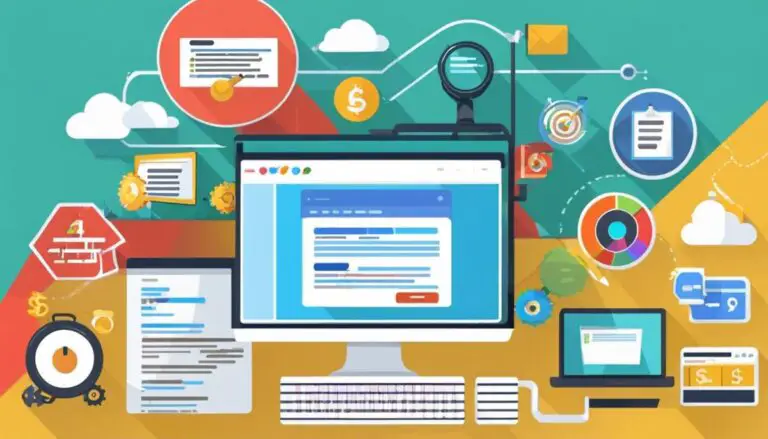In the rapidly evolving business world, the ability to successfully develop and launch a product represents a defining factor in a company’s sustainability and growth. Teeming with competition, the modern market requires an astute understanding of product development processes, from ideation phases up to testing, piloted by the guidance of market research. Equally crucial are the product launch strategies opted by companies, which heavily influence the reception of a product in the marketplace. This essay pivots around these key concepts, unearthing their importance, techniques, and real-world case studies, and highlighting the lessons that can be learned from both successful and unsuccessful endeavors.
Understanding Product Development
Product development is a systematic approach comprising multiple phases, from conceptualization to market launch. It begins with ideation, where teams brainstorm ideas, identify problems in the market that their product can solve, or explore ways to improve existing products. This could include unmet consumer needs, gaps in the current market, or ways to improve existing products to make them more appealing or efficient.
During the ideation phase, broad and diverse input from various stakeholders within the company and potential users is vital. The result of this phase is a clear definition of the product’s purpose and the problems it aims to address. Furthermore, it sets the groundwork for the next phase: concept development and testing.
In the concept development and testing phase, teams dig deeper into the proposed ideas. They craft detailed product concepts and gather consumer feedback on these concepts through surveys, focus groups, or individual interviews. A key idea in this phase is fail-fast, where a concept that seems less successful is quickly discarded for alternative and potentially more successful concepts.
After a concept is chosen, a prototype is developed in the product development and testing phase. The prototype can be a simple mock-up, a 3D printed model, or a minimum-viable-product (MVP). The purpose of this prototype is to test the functionality, appearance, and other critical attributes of the product. Rigorous testing, including beta testings conducted by real users, ascertain the effectiveness of product design and usefulness before finalizing the product.
The market testing phase exposes the product to a limited market for testing. This phase allows companies to identify potential issues before a full-scale product launch. Market testing may involve different channels like test stores, online platforms, or a specific geographic area.
A key component of product development is aligning market demands with the company’s technological capabilities. This involves striking a balance between what consumers desire or need and what the organization can feasibly create, given its technical expertise and resources.
This endeavor requires a deep understanding of the target market, current technological trends, and the company’s resources. It may involve trade-offs and compromises based on priorities and strategic goals. To strike this balance, effective communication is necessary between teams, especially between those who interface with the customers (sales, marketing teams) and those who design and build the products (engineering, production teams).
Market research is of immense significance and plays a critical role in the product development process. It provides essential insights into customer behavior, needs, and preferences, guides the ideation process, and reduces uncertainty.
Market research helps businesses to understand the market landscape, competitive environment, and discern market trends. It assists in identifying consumer problems that need solving and offers valuable information for concept development and testing. Furthermore, it remains a critical tool for validating the demand for the product, potential pricing, and ideal marketing channels.
Through quantitative and qualitative methodologies, market research offers data for informed decision-making throughout product development. It helps identify and validate valuable product features, potential improvements, and ultimately whether a product is likely to be a success or failure. This ensures that money and resources are invested wisely, and the product launched is more likely to meet the market’s requirements.
Every aspect of product development is a stepping-stone towards your product’s launch. The objective of a product launch strategy is not just to debut a new product to the market, but also to generate interest among consumers, and drive the initial sales. It’s highly imperative that your strategy minutely details every aspect of the launch including marketing, PR, educating your sales team, prepping the customer service team, ensuring readiness of the supply chain, and establishing successful business metrics.
Key factors determining the success of your launch include correctly identifying your target audience, creating a unique selling proposition, pricing your product appropriately, and strategizing your product’s distribution and promotion. Your strategy must not only make potential customers aware of your product but also communicate how it can meet their needs, and how it stands out in comparison to competitors in the market. Lastly, ensure you are prepared for any customer queries or concerns and have a well-trained support team to address and educate new users – this strategy will ensure a smooth launch and create a positive first impression of your product.

Product Launch Strategies
Grasping the Nuances of Product Development and Launch Strategies
Product development and launch strategies span across the comprehensive process of bringing a new product into the market. From the birth of a product idea to the point it becomes available for purchase, a crisp, to-the-point, and effective strategy is instrumental to its success. The developmental phase involves concept formulation, product designing, detailed engineering, market research, and scaling up production. On the other hand, your launch phase showcases your product to its potential market.
The Importance of Timing in Product Launch
One of the crucial elements in a product launch strategy is timing. Releasing a product too early can result in a product that isn’t fully developed or market-ready, leading to negative customer experiences. Conversely, launching too late can allow competition to gain market share. Effective timing involves understanding market dynamics and customer readiness for your product. It would also involve releasing at a time when it would gain the most attention, for example during industry events or holidays.
Using Marketing Channels and Public Relations
Using the right marketing channels is important for a successful product launch. These channels can include traditional methods such as television or print ads, but increasingly, digital channels such as social media, email marketing, and influencer marketing are seeing more success. Public Relations can also be a powerful tool in crafting the right public image for your product. This can involve working with influencers, getting feature stories or reviews in relevant publications, or leveraging social causes and initiatives that align with your brand’s core values.
Creating Buzz Prior to a Product Launch
Another strategy in successful product launches is to create buzz before the actual launch. This can involve teaser campaigns, pre-launch exclusives for select customers, or generating intrigue and excitement through enigmatic marketing. This generates anticipation and a sense of urgency in consumers, which can drive successful sales upon launch.
The Role of Digital Platforms
In the modern age, digital platforms play an enormous role in product launches. Social media allows for targeted advertising, immediate customer feedback, and the possibility of viral content, while e-commerce platforms provide a user-friendly shopping experience. Well-designed and responsive company websites are also crucial, as they act as the face of your business online.
The Importance of a Contingency Plan
A contingency plan is vital for any product launch. Despite rigorous planning and testing, unexpected obstacles may occur. A solid contingency strategy will identify potential problems that might arise and outline responses to mitigate their effect. These contingencies can cover a range of areas from supply chain disruptions, competitor’s responses, to negative customer feedback.
Post-Launch Customer Support
The work doesn’t end once your product is launched. Ensuring post-launch customer support is critical. This could include troubleshooting guides, FAQs, customer service hotlines, and warranties. By taking care of customers even after their purchase, a brand can develop long-term customer relationships, which not only helps with repeat business but also creates brand advocates that will encourage others to use your product as well. Establishing a strong customer service infrastructure also builds trust in your brand and helps identify any product flaw or opportunities for improvements in future product iterations.
Wrapping Up
Conclusively, a successful product launch requires a thorough comprehension of appropriately timed strategies, optimization of marketing channels, fostering strong public relations, and leveraging digital platforms. Creating a wave of anticipatory excitement, establishing a convincing contingency plan, and ensuring steadfast after-launch customer support become critical factors determining a product’s triumph or setback.

Photo by chrishenryphoto on Unsplash
Case Studies of Successful Product Launches
The Game-Changing iPhone Launch in 2007 by Apple
2007 marked a significant milestone in product launches with Apple introducing the first-ever iPhone. CEO Steve Jobs presented the device as not just a cutting-edge mobile phone, but a wide-screen iPod having touch controls and a breakthrough platform for internet communication. This tagline positioned the iPhone as a versatile device. Maintaining secrecy about the iPhone’s characteristics and capabilities until the official launch, Apple successfully used the element of surprise. This strategy ignited curiosity among consumers, leading to extensive media coverage and public intrigue. Apple further widened its potential user base by partnering with telecom leader AT&T. All in all, this strategic product launch not only defined a new era for the technology industry but also asserted Apple’s pioneering status in the smartphone world.
Starbucks VIA Ready Brew Launch
Starbucks offers another successful example of product development and launch strategy with its VIA Ready Brew instant coffee product in 2009. The company conducted extensive product research, during which they discovered a niche for high-quality instant coffee. To ensure a successful launch, they built upon the existing Starbucks brand image and reputation for quality coffee while effectively meeting the needs of consumers who wanted high-quality coffee on the go. Furthermore, the company employed a gradual rollout, initially launching the product in a limited number of stores and regions and later expanding across the U.S. and internationally. This strategy allowed Starbucks to carefully gauge consumer response and make adjustments as necessary.
Tesla Model 3 Launch
Tesla’s strategy to announce and launch its Model 3 in 2016 revolutionized the automobile industry. Months before the launch, Tesla CEO, Elon Musk, teased the forthcoming reveal of the Model 3, stirring suspense among car enthusiasts and tech lovers alike. On the day of the launch, Tesla first showed off the Model 3 to a small group of selected observers before revealing it to the public. Simultaneously, the company started accepting pre-orders. This strategy resulted in nearly 200,000 pre-orders within just 24 hours of the revelation, despite production slated for more than a year later.
Gmail April Fool’s Launch
In a non-conventional approach, Google launched Gmail on April 1, 2004, igniting skepticism due to the infamous April Fool’s Day pranks the tech giant was known for. However, the introduction of 1GB of free storage, a lightning-fast interface, and a smart organizational system was real. Google’s risky yet clever launch strategy gained media attention globally and effectively attracted a mass user base. This strategy demonstrated the importance of taking calculated risks, leveraging significant dates, and delivering solid functionalities in product launches.
Revolutionizing the Beauty Industry: The Dyson Supersonic Hair Dryer Launch
In 2016, Dyson reshaped the beauty industry with the successful introduction of their Supersonic Hair Dryer. Engaged in meticulous product development for four years with a whopping investment of £50 million, Dyson set new industry standards and underscored the value of precise engineering. Using this commitment to detail as a marketing weapon, Dyson leveraged its reputation of reinventing everyday items. By positioning their product as a ground-breaking, technologically superior tool, Dyson drew in consumers who were willing to shell out more for this novel hair dryer.

Failures and Learning in Product Development and Launch
Missteps in Product Development and Launch: Failures and Lessons Learned
Despite best-directed efforts, a product might falter in the market. It presents an important opportunity to dissect these instances and evade similar errors in the future. Consider the infamous “New Coke” case of 1985. Aiming to invigorate its brand and outdo Pepsi, The Coca-Cola Company rolled out a new formula. But instead of a sales boost, this drastic change caused a public furor, compelling the company to reintroduce the original formula as “Coca-Cola Classic.”
This episode highlighted the essentiality of understanding and respecting consumer preferences before altering a well-loved product significantly. Even with multiple taste tests showing a preference for New Coke’s taste, The Coca-Cola Company had overlooked consumers’ deep-seated emotional connection to the original formula.
Similarly, Microsoft stumbled with Windows Vista’s launch in 2007. Meant to outclass the successful Windows XP with advanced features and a modernized operating system, Vista instead faced significant criticism over compatibility issues, hefty system requirements, and perplexing user control levels.
This fiasco emphasized the vital importance of thorough product testing before rolling it to a broader audience. Bitten once, Microsoft learned its lesson, ensuring that the subsequent products were more robust, intuitive, and user-centric.
The Importance of Adaptability and Quick Decision Making
Being adaptable involves the willingness and ability to adjust your course of action in response to changing circumstances. For instance, in the case of Apple’s Newton MessagePad, considered by many as a precursor to the modern smartphone, the product faced many issues with handwriting recognition, weight, and price when it was released in 1993.
Despite the MessagePad’s failure, Apple demonstrated the significant adaptability by learning from its past mistakes. Eventually, the company used the lessons from the Newton to hit it big with the iPhone and iPad years later.
Finally, quick decision-making is vital in the fast-paced world of product development and launch. Sometimes, a timely decision can mean the difference between the success or failure of a product. An example of this is when McDonald’s quickly pulled its Arch Deluxe Burger from the menu when it became clear that customers weren’t warming to the new offering.
Quick decision-making could also involve making the tough call of pulling a product out of the market or pivoting to a new strategy in face of negative feedback. This can save not only resources but also shield the brand from potentially long-term damage. Regardless of whether a product turns out to be a success or failure, there’s always an opportunity to learn, improve, and create better offerings in the future.

The journey of product development and launch is filled with learning, from both success and failure, and is incessantly challenging. It requires careful planning, agile decision-making and a relentless drive for innovation. Case studies, drawn from a variety of industries, underline the choices leading companies make while launching their products, and demonstrate how these decisions can make or break a product’s success. Additionally, the examination of certain failed products offers invaluable lessons, emphasizing the necessity of adaptability and quick, informed decision-making in the face of unforeseen circumstances. Armed with an understanding of these pivotal aspects, anyone can navigate their path in product development and launch with far more confidence and insight.




